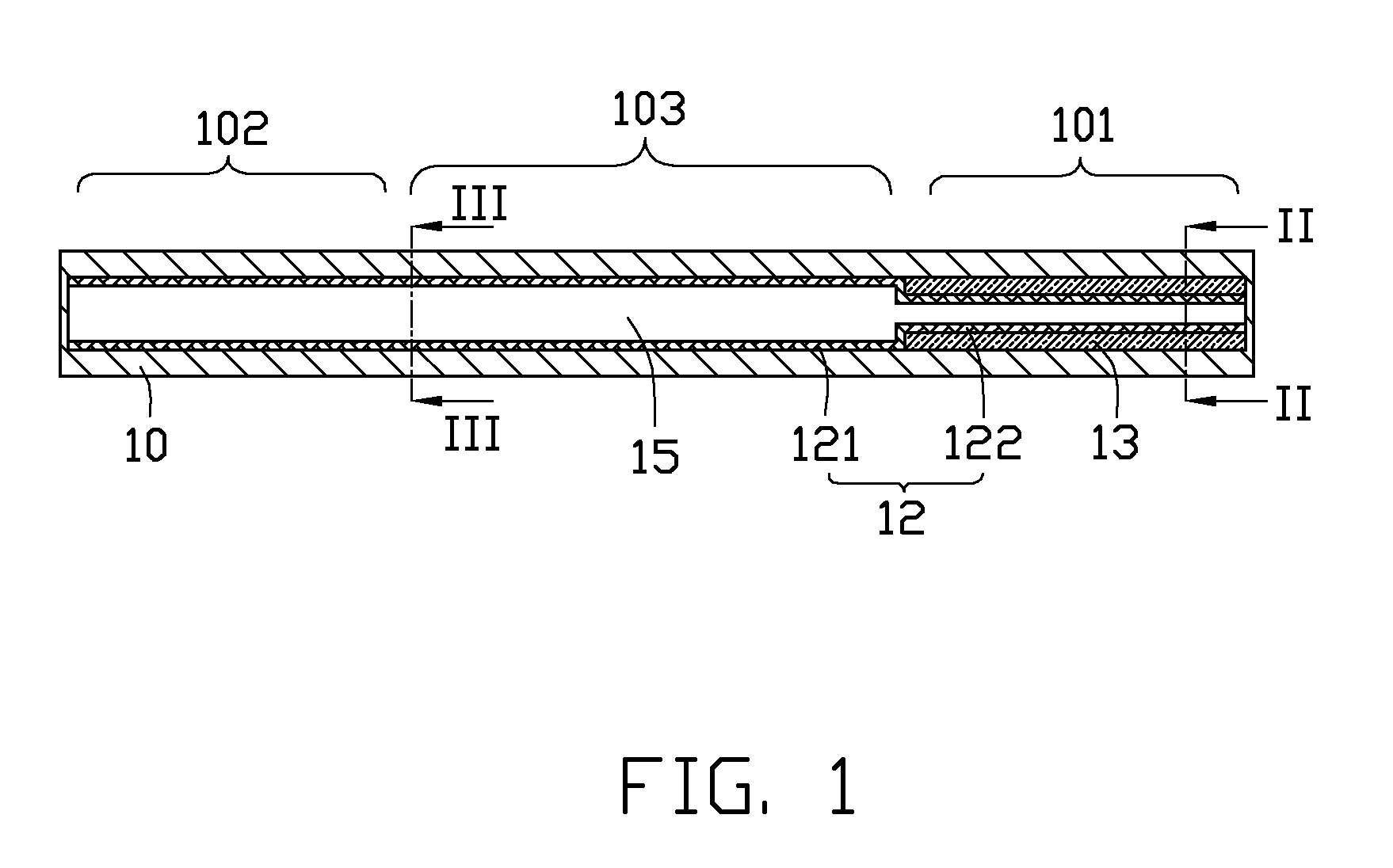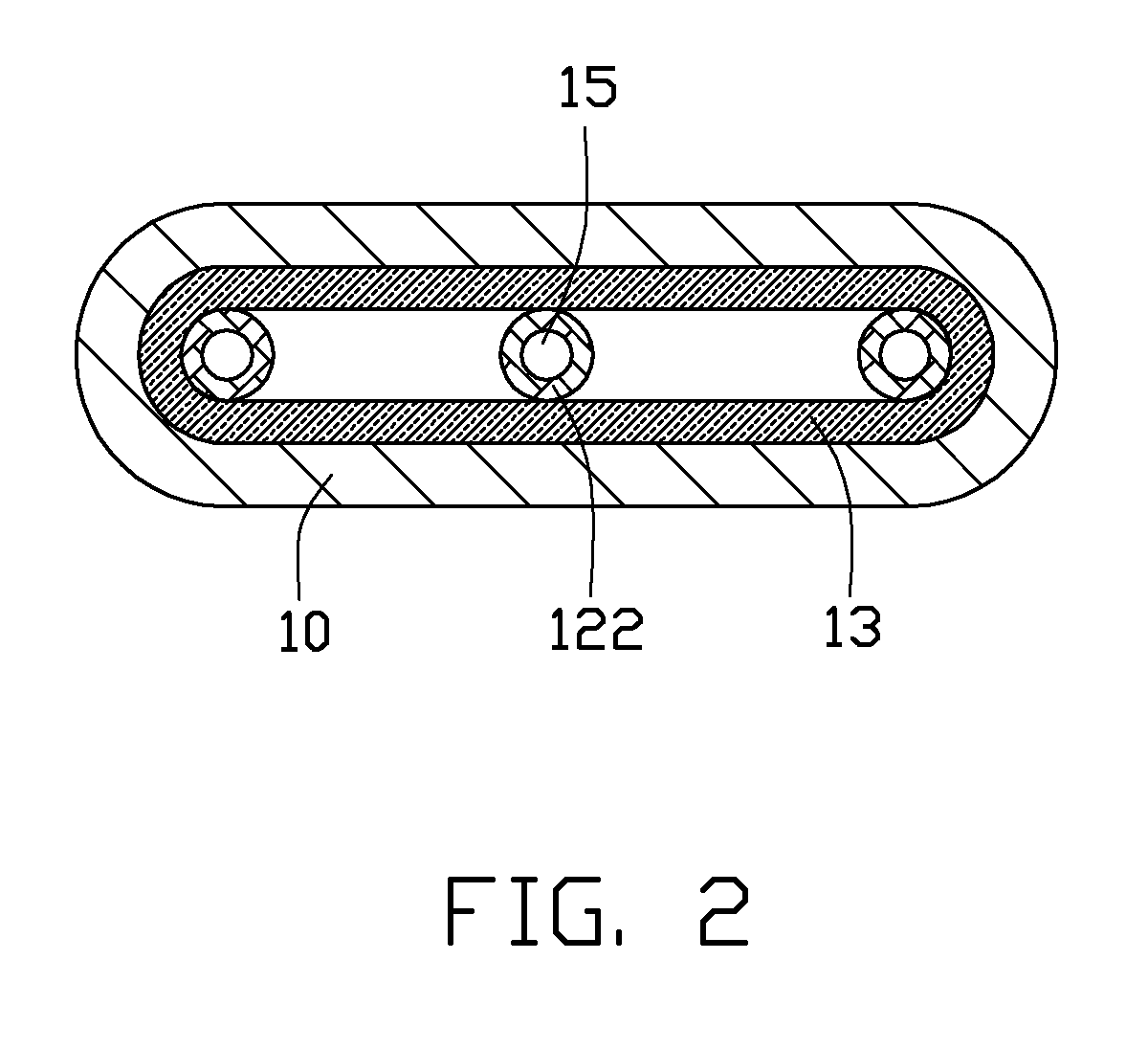Heat pipe with composite wick structure
a composite capillary and heat pipe technology, applied in the direction of electrical equipment, lighting and heating equipment, semiconductor devices, etc., can solve the problems of reducing the capillary force provided by the wick structure, reducing the heat transfer capability of the heat pipe, and damage to the wick structure of the heat pip
- Summary
- Abstract
- Description
- Claims
- Application Information
AI Technical Summary
Benefits of technology
Problems solved by technology
Method used
Image
Examples
Embodiment Construction
[0018]FIGS. 1-3 illustrate a heat pipe in accordance with a first embodiment of the present disclosure. The heat pipe is a plate-type heat pipe, and includes a flat tube-like metal casing 10 with two ends thereof being sealed, and a variety of elements enclosed in the metal casing 10, i.e., a wick 13, three artery meshes 12, and a working medium (not shown).
[0019]The casing 10 is made of high thermally conductive material such as copper or aluminum. A width of the casing 10 is larger than a height of the casing 10. To accommodate lightweight requirements of electronic products, the height of the casing 10 is preferably not larger than 2 mm. The casing 10 has an evaporating section 101, an opposing condensing section 102 along a longitudinal direction of the heat pipe, and an adiabatic section 103 disposed between the evaporating section 101 and the condensing section 102. The working medium is saturated in the wick 13 and the artery meshes 12. The working medium is usually selected ...
PUM
 Login to View More
Login to View More Abstract
Description
Claims
Application Information
 Login to View More
Login to View More - R&D
- Intellectual Property
- Life Sciences
- Materials
- Tech Scout
- Unparalleled Data Quality
- Higher Quality Content
- 60% Fewer Hallucinations
Browse by: Latest US Patents, China's latest patents, Technical Efficacy Thesaurus, Application Domain, Technology Topic, Popular Technical Reports.
© 2025 PatSnap. All rights reserved.Legal|Privacy policy|Modern Slavery Act Transparency Statement|Sitemap|About US| Contact US: help@patsnap.com



